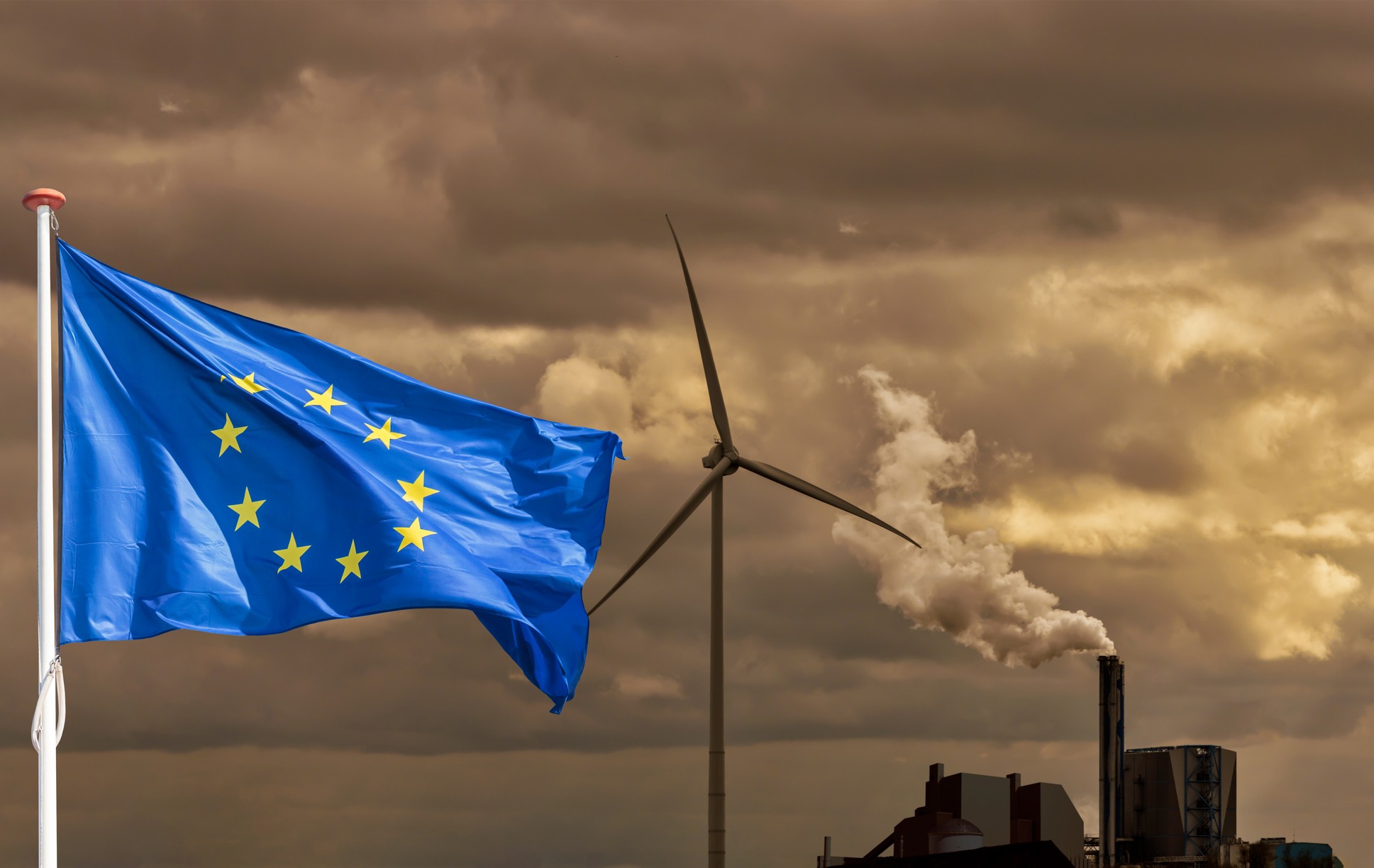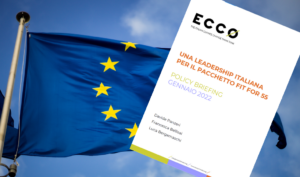Key points:
- The Clean Industrial Deal (CID) effectively identifies obstacles and bottlenecks to European competitiveness, but its approach to solutions should be more targeted and identify the key elements that make each intervention concretely relevant to the industrial context.
- The CID should outline how the deployment of renewable energy sources (RES) and energy efficiency specifically apply to the industrial sector. This would enhance clarity on their relevance and benefits, facilitate the identification of any intra-sectoral synergies and highlight potential obstacles, as well as strategies to overcome them.
- Any additional sectoral support for energy prices should be tailored to protect the sector’s ability to invest in innovation, decarbonisation and efficiency measures.
- The CID and Action Plan for Affordable Energy (APAE) should identify broad sectoral categories where electrification faces common barriers. This would enable targeted action under the APAE to establish the necessary conditions to accelerate electrification, without unnecessary delays.
- The sectoral plans should make SMEs an active part of the competitiveness and decarbonisation challenge.
- Within the framework of the CID, the Commission should publish a dedicated sectoral plan for the fossil fuel industry to prepare and manage its wind down, addressing both financial and social impacts.
- Greater coordination with Member States could prevent the duplication of industrial investment and the emergence of internal overcapacity and competition. At the same time, it would maximise synergies, foster the development of integrated value chains, and address any undercapacities and gaps in strategic value chains.
The Clean Industrial Deal
The CID, published by the European Commission on 26 February, outlines the EU’s industrial strategy based on an approach combining growth and decarbonisation. It also provides the missing piece of the Fit for 55 package: a focus on industrial decarbonisation and its role in the global race for cleantech. The CID is intended to serve as a unifying framework, within which the Commission will develop sectoral transition pathways.
Overall, the document broadly responds to its purpose by identifying key areas of work that can unblock the EU’s industrial potential. Amongst these are energy prices, lead markets for green goods and technologies, the international and trade dimensions, financing, labour and skills.
However, while the document successfully identifies the obstacles and bottlenecks to European competitiveness, its approach to solutions appears overly broad and fails to identify the key elements that make each intervention concretely relevant to the industrial context. The result is a framework which, despite its comprehensiveness, risks being ineffective in providing a clear direction of travel to both industry and Member States, which without strong guidance risk moving in different directions. The Draghi Report highlighted the need to overcome the lack of coordination between national industrial policies, but the CID fails to build upon this key element. Although the broad strategic approach of the CID is necessary, further efforts are needed to make it more granular and better aligned to industry demands.
The price of energy
One of the CID’s main areas of focus is energy prices, a key driver of competitiveness. In line with the Competitiveness Compass, the CID highlights that Europe’s higher and more volatile energy prices are due to a combination of structural factors, including dependence on fossil fuels imports and Russia’s manipulation of this dependence.
The implications of this are evident throughout the document: shifting industrial energy consumption from fossil fuels to electricity can reduce energy costs and improve competitiveness, provided that the lower costs of energy production from RES are effectively passed on to businesses and accompanied by energy efficiency measures.
The Commission intervenes within the Action Plan for Affordable Energy (APAE), the dedicated plan published alongside the CID. Its approach works on two levels, in coherence with REPowerEU: managing energy costs in the current situation, where gas prices remain a key factor in determining electricity prices, and facilitating the substitution of fossil fuels with RES and energy efficiency in the long term. However, the APAE falls short in providing sufficient detail on what this drive should look like in an industrial setting. This makes it harder to identify intra-sectoral synergies, as well as the possible obstacles to RES and energy efficiency adoption, and the strategies needed to overcome them.
APAE focuses on increasing the adoption of Power Purchase Agreements (PPAs), Contracts for Difference (CfDs) and flexible retail contracts that orientate industrial energy consumption off-peak. However, it lacks details on how manufacturers can achieve energy cost reductions in the shorter term by deploying RES capacity. As an example, the process between permitting and actual installation can be lengthy, which, for an industrial player, can lead to missed business opportunities. The Commission should therefore consider mechanisms to overcome challenges such as this, for example guaranteeing an immediate reduction of energy costs for companies that take a final investment decision on RES deployment.
The European proposals also lack details on how success should be measured. A key consideration should be that the required energy price reduction should not be calculated based on turnover, which primarily reflects size rather than competitiveness. Instead, it should be calculated based on an industry’s or product’s expected margins, with the aim of ensuring that each sector maintains its ability to invest in innovation, decarbonisation and efficiency measures, further improving their competitiveness. Establishing this principle would be important to help guide decisions to make additional sectoral support available in the future.
Electrification of industrial processes
A key element of minimising Europe’s dependence on fossil fuel is the electrification of industrial energy consumption. As electrification is the most cost-effective solution in many sectors, especially when paired with energy efficiency measures, it could drive competitiveness both by reducing energy costs (and protecting industry from sudden price spikes) while also granting access to emerging green markets. While the CID and APAE recognise that the EU must advance towards electrification, they fail to clearly define what this means in practice for industry. With an Electrification Action Plan not expected for another year, at the very least, the CID and APAE should partially compensate for the lack of direction this delay implies by identifying broad categories of sectors where electrification faces common barriers. This would also help direct action under the APAE towards creating the enabling conditions that can immediately kickstart the electrification process in many sectors, rather than waiting for the Electrification plan in 2026.
These categories could broadly be defined as follows:
– Sectors and processes where electrification can already be cost-effective. This applies, for example, to process heat below 150°, which is relevant for sectors such as food and textiles. In these industries, broader actions already included in the CID to reduce the OpEx for electrified productions (electricity price reduction, rebalancing of energy taxation to reduce the burden on electricity) as well as to strengthen distribution and transmission networks, could be sufficient to create a business case for electrification. However, in certain cases additional support for CapeEx would be required to bring forward the deployment of more efficient electrified solutions, where price is still higher compared to fossil-based alternatives. Although rebalancing of taxes and levies across energy vectors is key, the fact that taxation falls within Member States’ competence limits the Commission’s role to merely recommending progress on the approval of the Energy Taxation Directive. The risk of weak implementation by Member States is high, whereas bold action is required. Instruments such as the upcoming ETS 2 could be used to overcome this stumbling block to European competitiveness.
– Sectors and processes where electrification technologies are not yet mature or do not yet provide sufficient efficiency savings to be fully competitive with fossil-based solutions. Higher temperature processes (150-450°) are an example. In these cases, actions to support OpEx and CapEx remain relevant, but the industrial plan should also include additional initiatives that encourage the adoption of industrial scale technologies that are not yet at commercial stage. This would provide the economies of scale necessary to reduce technological costs while protecting European manufacturers from international competition. Initiatives to support the necessary technologies, based on the model of the Innovation Fund, would be valuable in bringing key technologies from the demonstration to the commercial scale.
– Sectors and processes where electrification is one of the possible solutions, but R&D is needed to enable technology uptake, or where electrification is currently not applicable. This includes high-temperature processes where using electricity is either impossible or so inefficient it fully absorbs the cost advantage, as well as processes where fossil fuels are used as feedstock, such as primary cement production. Unable to benefit from the higher efficiency of immediate electrification, these sectors require dedicated sectoral plans to access alternative, albeit more expensive, decarbonised energy sources such as hydrogen or e-methane, or where CCS technology should be deployed at scale. The approach here should focus on supporting investment in R&D with an open technology approach, to enable the market to identify the most cost-effective solution in each case.
This broad division would also be helpful in informing the work of the Industrial Decarbonisation Bank, which should apply strict efficiency criteria to the decarbonisation projects it finances. The most efficient technologies should be financed first, with less cost-effective technologies financed only when (and in the measure which) more cost-effective technologies are not yet mature or available. Maintaining tight control on the quality of public spending in relation to its objective is particularly relevant, given that the proposed funding of €100bn, mostly derived from repackaged existing funds, is modest in relation to the objectives of the CID.
Making SMEs an active part of the competitiveness and decarbonisation challenge
SMEs represented 99.8% of European Enterprises in 2024 (93.6% have less than 9 employees) and 53.1% of the value added, making them crucial to the success of any industrial plan. SMEs can deliver a significant percentage of decarbonisation, are hubs for innovation and represent a significant market for green technologies, as well as a key part of energy intensives’ value chains. While the CID focuses on circularity, green technologies and energy intensive industries – three key elements – equal attention should be devoted to SMEs. The CID promises particular attention to SMEs within the upcoming sectoral dialogues, but despite mentions in the published automotive and steel plans and the cross-sectoral APAE, the details on how SMEs can be integrated into the plan are scarce. Given the multifaced nature of SMEs and their smaller size, tailored planning and provisions should be incorporated into each sectoral plan to ensure that the right kind of flexible support is provided to them (such as longer phase-in periods for certain requirements, simplified compliance checks, capacity building), as SMEs often struggle to access the expertise and capital required to decarbonise. The Competitiveness Compass promised the introduction of an ‘SME and competitiveness check’, which is missing in the CID but should be introduced as a matter of priority. In addition, dedicated provisions for SMEs should be included in all sectoral plans, moving beyond simple box-ticking exercises. Any European funding directed towards implementing the CID, especially through the Decarbonisation Bank, should have dedicated programmes for SMEs with simplified access and proactive support. Involving and activating SMEs in the competitiveness and decarbonisation challenge is not a peripheral consideration, it is central to the success of both the climate and industrial objectives of the European Union.
Managing the transition away from fossil fuels
Even though the CID does not explicitly state it, the logical consequence of the EU’s dependance on fossil fuels imports as a key factor of Europe’s high energy prices, is that addressing these high prices implies transitioning away from fossil fuels. This is also intrinsic to the EU’s drive towards electrification, acceleration of RES deployment, its climate objectives and its goal of reducing its geopolitical dependencies towards fossil fuel exporters.
While fossil fuels will continue to play a significant role in the short-term, and a minor role in certain sectors in the long-term, a key outcome of the CID, in line with other EU legislation, is that the EU’s fossil fuel industry will need to significantly wind down in the medium-term. If this process is not anticipated and managed, it could have unpredictable and sudden consequences for both employment and investment in these sectors.
Therefore, the CID should serve as the framework within which the Commission publishes a sectoral plan dedicated to the fossil fuel industry. This plan should assess current fossil fuel demand, estimate how this might change in the coming years based on the APAE, CID and other relevant legislation, including the Fit for 55 package, and prepare a sectoral plan to manage the sector’s wind down in line with the resulting timetable, looking at both financial and social impacts.
Establishing an estimated timetable for fossil fuel demand in Europe would also enable better decision making by the EU, Member States and investors, as it would provide better clarity into the business case and the value for money of investments in new fossil fuel infrastructure, such as LNG terminals, connecting pipelines or LNG export facilities in third countries, as outlined in the APAE.
This is particularly important for the public purse, as it helps avoid inefficiencies in the use of funds, and also for industries where alternatives to fossil fuels are not yet on the horizon. This is because, as the majority of the economy electrifies, or otherwise decarbonises, the costs of stranded infrastructure and fossil fuel investments will inevitably be charged, via the price of fossil fuels, on a shrinking pool of fossil fuel users, which could significantly increase their energy costs.
Finally, a broad timeline for the transition away from fossil fuels would inform the upcoming plan to eliminate Europe’s reliance on Russian energy imports by providing insight into what types of alternative agreements and investments might be appropriate, considering the transforming European demand for fossil fuels.
European coordination
During his parliamentary hearing, European Commissioner for Prosperity and Industrial Strategy Stéphane Séjourné, announced the intention to create a Competitiveness Coordination tool to better align national policies. However, the Clean Industrial Deal does not seem to include such a mechanism. Coordinating the development of national industrial strategies within the European framework would be invaluable. It would help Member States avoid duplicating industrial investment and creating internal overcapacity and competition, while maximising synergies, developing integrated value chains and addressing any undercapacities and gaps in strategic value chains. This, in turn, would inform decision-making at both European and national level on which sectors are strategic and which trade-defense instruments should be deployed and where, to protect European industrial interests. To illustrate how a lack of coordination can undermine European efforts, it is sufficient to note that energy-intensive industries, identified by the CID as a key constituency that needs support, are not uniformly defined across Member States, making it difficult to design and apply targeted support measures.
As noted by Draghi in his Report, “Uncoordinated national policies often lead to considerable duplication, incompatible standards and failure to consider externalities. One particularly damaging externality in the EU context is its adverse impact on the Single Market when the largest countries with the most fiscal space can provide much more generous support than others’. This should induce caution in relation to another aspect of the CID, that is the reliance on the simplification of State Aid rules ‘to accelerate the roll-out of renewable energy, deploy industrial decarbonisation and ensure sufficient capacity of clean tech manufacturing in Europe”.
The reliance on the relaxation of the State Aid regime without any additional funding to finance the CID, especially in a context where national efforts are poorly coordinated, risks deepening the differences between Member States based on their fiscal capacity. The potential impact this could have on the functioning of the Single Market should not be underestimated.
Conclusion
The CID provides confirms the key aspects of the EU’s drive to ensure Europe’s industry remains competitive. However, it leaves room for improvement in connecting, even in broad terms, these key aspects with the reality of the opportunities, needs and challenges faced by various sectors. The CID should be bolder in drawing the conclusions from its observations and turning these into solutions. Only in this way can the CID fully become the plan that enables Europe to act together, harnessing the strength of the Single Market and rise to the challenge of international competitiveness.
Photo by DutchScenery







